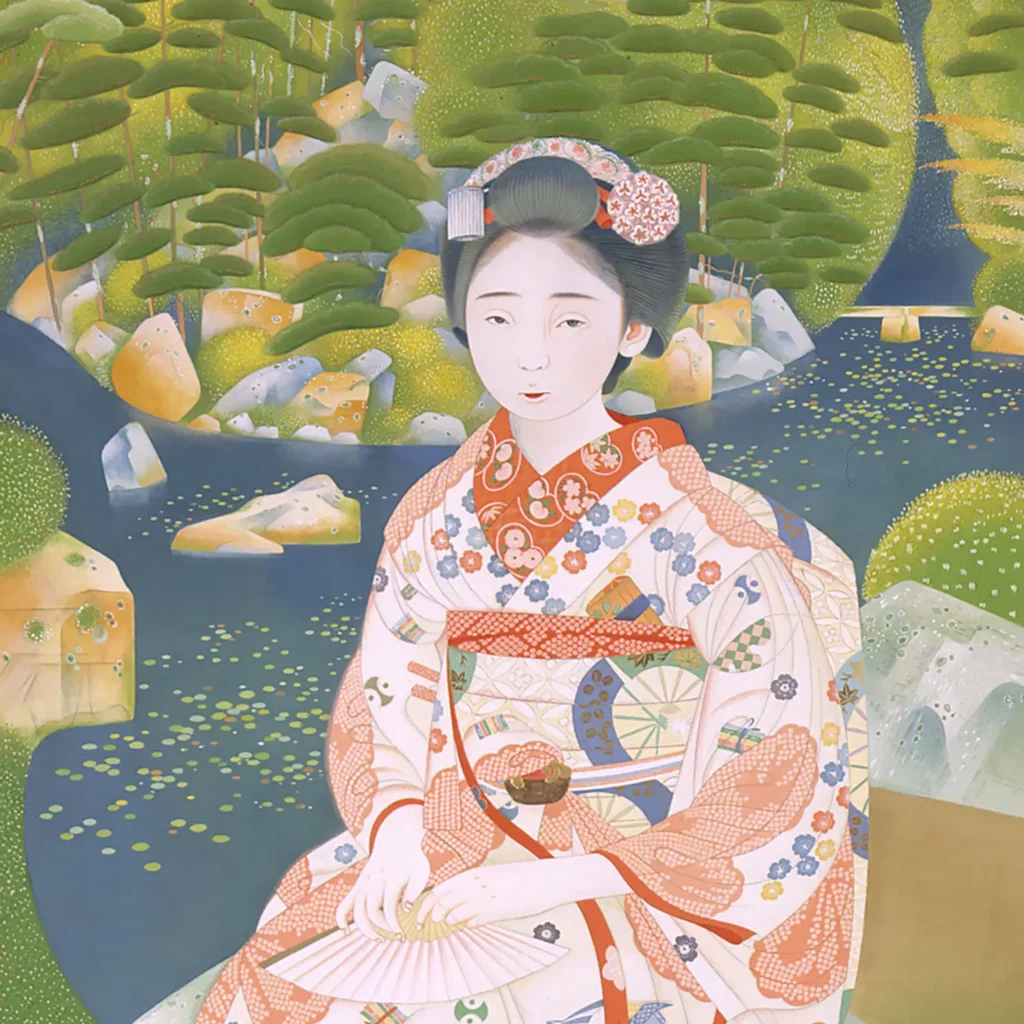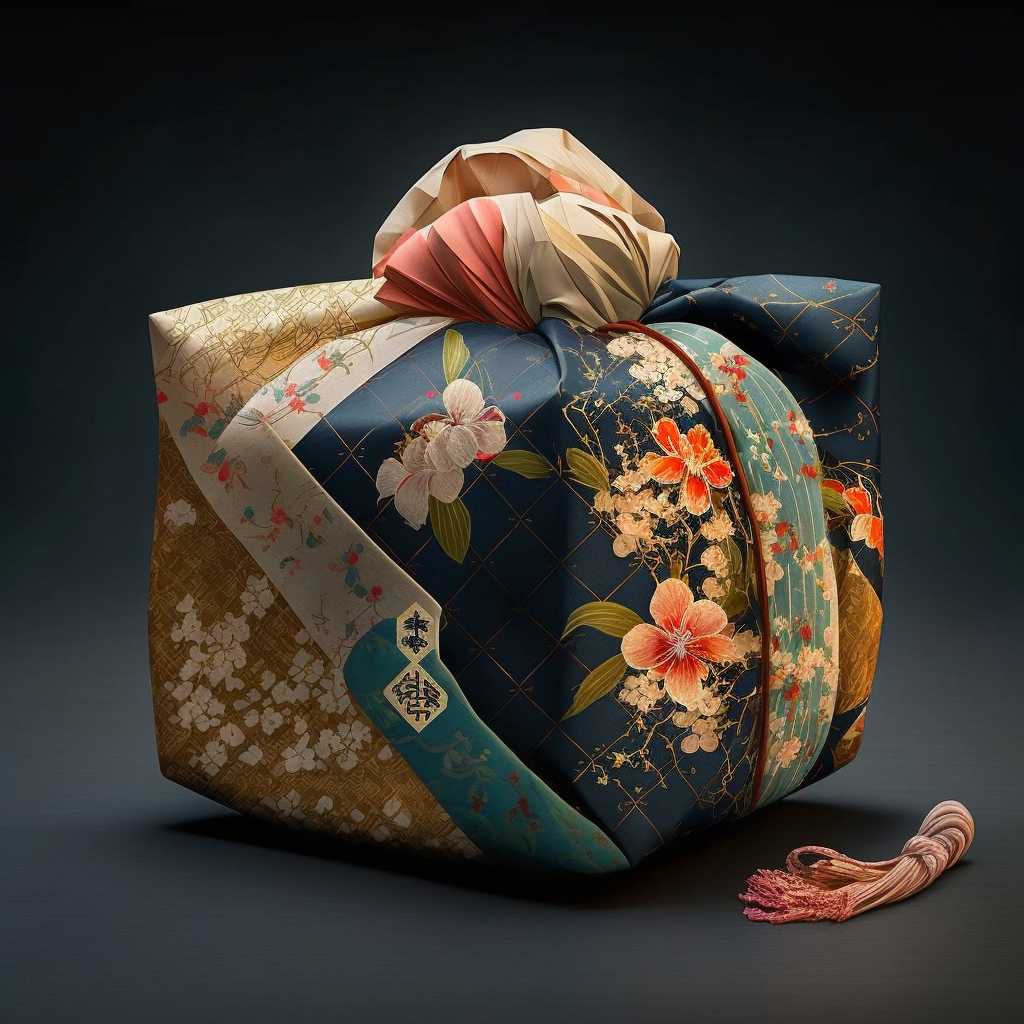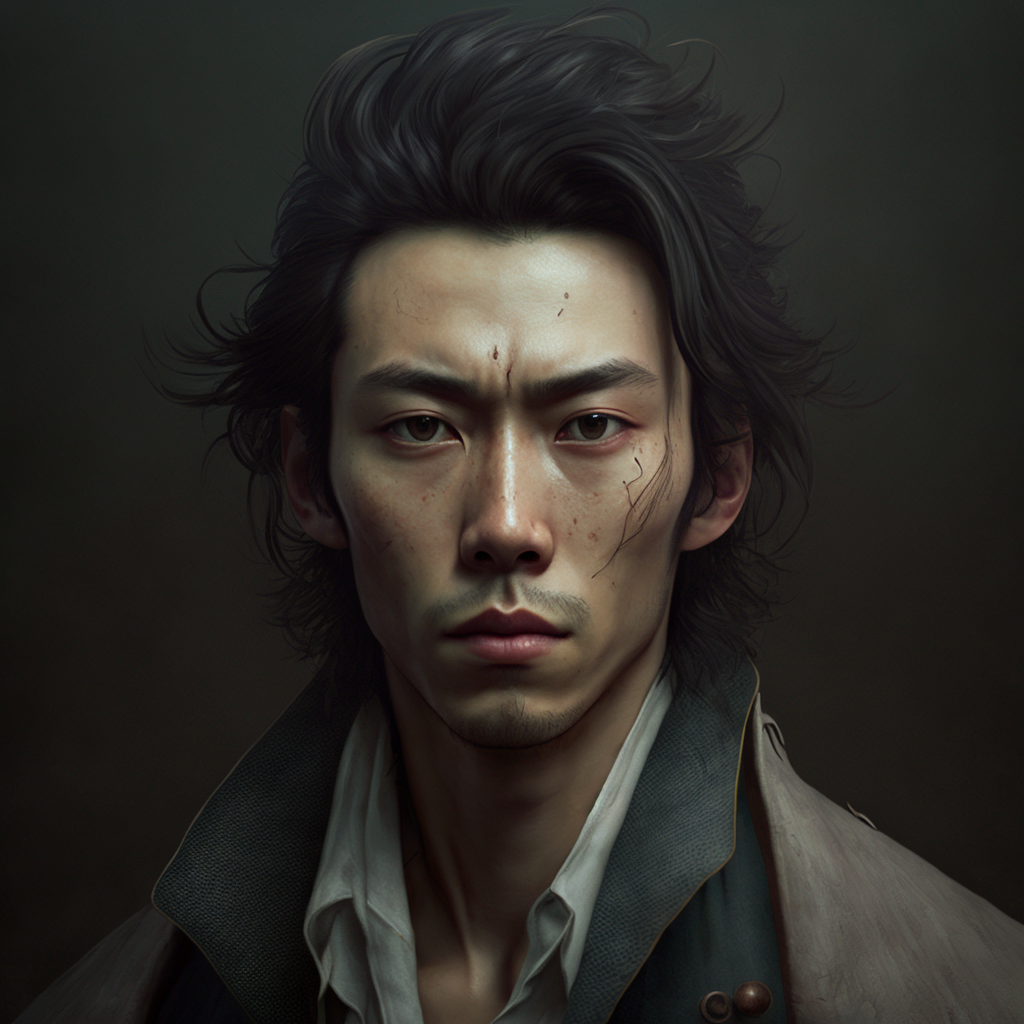Tsuchida Bakusen (土田麦僊) was a Japanese painter who left a significant imprint on the history of Japanese art of the Taisho era (1912-1926). Born on Sado Island in Niigata Prefecture, he grew up in a time of cultural transition, when Japan was facing growing Western influence. Bakusen focused on reinterpreting traditional Japanese painting techniques, while incorporating modern elements into his work. His innovative style and his commitment as a co-founder of the Nihonga school allowed him to be recognized as one of the major artists of his time. In this article, we will explore the life, work and legacy of Tsuchida Bakusen.
I. The Life of Tsuchida Bakusen
Tsuchida Bakusen was born on Sado Island, located in Niigata Prefecture, Japan, to a wealthy and influential family. He was the younger brother of the philosopher Tsuchida Kyōson (1891-1934). As a teenager, he was destined to follow a career as a Buddhist priest by his father, but his passion for art led him to flee the temple where he was apprenticed, in order to pursue artistic studies. His determination led him to be accepted as a student by the famous painter Takeuchi Seihō.
Later, Bakusen continued his studies at the Kyoto Kaiga Senmon Gakko (now Kyoto University of the Arts), from which he graduated in 1911. This was a milestone in his artistic career, as he developed his skills there and strengthened his love for the traditional Japanese art, Nihonga.
In 1918 Bakusen founded a painting collective in collaboration with other talented artists such as Kagaku Murakami, Ono Chikkyō, Sakakibara Shihō and Nonagase Banka. This association was called the “Kokuga Society” (Kokuga Sōsaku Kyōkai), which aimed to promote an eclectic artistic style combining Western techniques and styles such as yōga (Western oil painting) and nihonga (traditional Japanese painting). Bakusen specialized in subjects such as portraits of maikos, women (bijinga), as well as still lifes and floral representations.
The Kokuga Society held its own annual exhibition, the Kokuten (short for Kokuga Sōsaku Kyōkai Tenrankai), which competed with the official Bünten exhibitions. Between 1918 and 1928, seven Kokuten exhibitions were organized, thus marking the growing notoriety of the group of artists.
In 1921, Bakusen took a break from Kokuga Society activities to travel to Europe, accompanied by Ono Chikkyō, to visit museums of Western art. This trip profoundly influenced his art, as he was particularly drawn to French Impressionism and Post-Impressionism, notably the works of Paul Gauguin, Vincent van Gogh and Paul Cézanne. During his stay in Europe, Bakusen collected several of their works, which exerted a lasting influence on his own artistic style.
After his return in 1923, the activities of the Kokuga Society resumed. However, due to financial difficulties and internal differences, the group eventually disbanded in 1928.
In 1934 Bakusen was made a member of the prestigious Teikoku Bijutsuin (Imperial Academy of Arts). Unfortunately, his life was cut short by pancreatic cancer and he died in June 1936. His grave is at Chishaku-in Temple in Kyoto, where his memory continues to live on.
II. The Work of Tsuchida Bakusen
Among his most famous works is the 1918 painting “Young Girl in the Public Bath” (湯女図, Yunazu), now housed in the Tokyo Museum of Modern Art, registered as an “Important Cultural Property of Japan” (BCJ) by the Agency for Cultural Affairs. However, his undeniable masterpiece remains the canvas entitled “Maiko in the Garden” (舞妓林泉, Bugi rinsen), also owned by the same museum.
- “Island Women” (島の女, Shima no onna), 1912, Tokyo National Museum of Modern Art
- “Young Girl in the Public Bath” (湯女図, Yunazu), 1918, Tokyo National Museum of Modern Art
- “Maiko in the Garden” (舞妓林泉, Bugirinsen), 1924, Tokyo National Museum of Modern Art
- “Ohara Street Vendors” (大原女, Oharame), 1927, Kyoto National Museum of Modern Art
Tsuchida Bakusen was one of the most prominent artists of the Taisho era, whose contributions to traditional Japanese painting remain admired to this day. His commitment as a co-founder of the Nihonga School and his innovative style had a lasting impact on the art world in Japan. His artistic legacy lives on through his works and his influence on contemporary artists. As a true pioneer of Japanese painting, Tsuchida Bakusen will continue to inspire future generations of artists and viewers, perpetuating her memory in the history of Japanese art.



